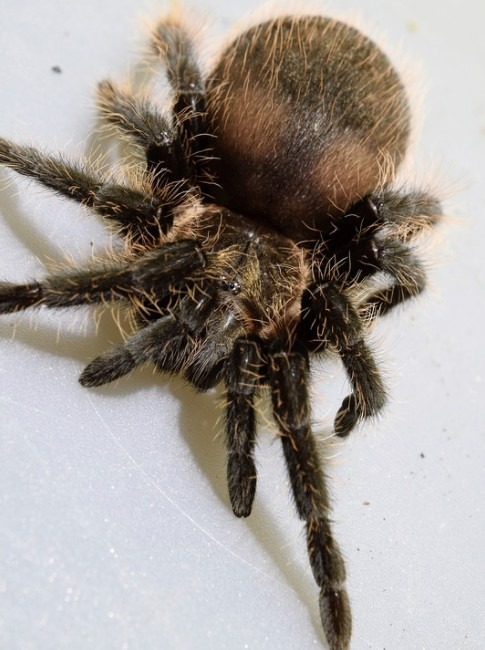The Honduran Curly Hair Tarantula, also known as Wooly Tarantula, Curly Hair Tarantula, and Tliltocatl albopilosus, is a tarantula species native to Nicaragua and Costa Rica. This species is touted as a terrestrial, opportunistically burrowing spider. It possesses a round body covered in long, slightly curled bristles, hence its name. Generally calm and easy to care for, Honduran Curly Hair Tarantulas make perfect spider pets for novice hobbyists. If you are eager to find out more interesting facts about this spider species, make sure to read further!
History
This spider species was first described in 1980 by Carlos Valerio. Honduran Curly Hair Tarantulas are commonly found in tropical scrubland, either near rivers, around the base of towering trees, or in cleared rain forests. They can also be found in savannahs like most tarantula species. Their faster growth rate compared to Mexican Red-knee Tarantulas is what makes them more appealing for beginners. Although not as colorful as other tarantula species, the Honduran Curly Hair Tarantula possesses a charm of its own—its slightly curled hairs give it a shabby look, and a closer look at its body will make you realize that it’s covered in gold and tan hairs.
Characteristics of a Honduran Curly Hair Tarantula
Average length: 5.5 inches
Average weight: Around 1 ounce
Average life span: Males live an average of 4 years, while females live 8-20 years
The Honduran Curly Hair Tarantula has a plump body that’s covered with black to dark brown hairs, which turns light from dark as the tarantula ages. It possesses a golden-bronze sheen because of its longer gold bristles that cover its body. In captivity, both male and female Honduran Curly Hair Tarantulas have an average leg span of over 6 inches. Males usually appear lighter bronze compared to females.
These spiders are described as quiet and mellow by hobbyists. In fact, one might find them boring due to their calm disposition. In captivity, you may find a Honduran Curly Hair Tarantula moving around the enclosure and might even rearrange some decorations. Aside from their restful nature, these tarantulas are easily startled, so it is best to keep gentle handling at a minimum. Keep in mind to sit on the floor while handling a tarantula because falling from an extreme height can cause severe complications to your pet.
Caring for a Honduran Curly Hair Tarantula
A 5- to 10- gallon tank is ideal for a single adult Honduran Curly Hair Tarantula. Since this species is not much of a climber, it would appreciate more ground space. Keep in mind that the enclosure’s width should be at least two or three times longer than your spider pet’s leg span.
For the substrate, you can provide at least 3 inches of chemical-free potting soil, peat moss, or vermiculite. Another option is to add a coconut husk bedding, which can usually be purchased at your local pet store. These materials accommodate the burrowing behavior of the Honduran Curly Hair Tarantula. As such, adding pieces of cork bark, half of a small clay flower pot, and or a hollow log is recommended for your spider’s hiding spot.
As for the enclosure’s temperature, keep it between 75 and 85 degrees Fahrenheit. You can also provide a heating pad under the tank to retain the appropriate temperature. Buy a thermometer to measure the temperature regularly. Keep the enclosure out of direct sunlight. Your spider would need an environment with a humidity level between 65% and 70%, which you can measure with a hygrometer. Should you need to raise the humidity, you may mist the enclosure with water from a spray bottle.
Like most tarantulas, Honduran Curly Hair Tarantulas love feeding on live crickets, waxworms, roaches, and other insects. When feeding, make sure that the food is not larger than your pet’s body. Occasionally, you can feed your pet with a pinky mouse to increase its protein intake. Young Honduran Curly Hair Tarantulas shall be fed every two to five days, whereas adults can survive with food once a week. While they mainly get their hydration from food sources, you still need to provide a water dish for your pet. For appropriate feeding instructions, you may visit a veterinarian.
Honduran Curly Hair Tarantulas do not usually face serious health problems, but if your pet becomes lethargic or has lost its appetite, consult a veterinarian immediately.

